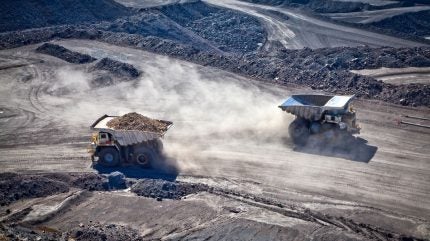
The mining industry is at a turning point, with electric mines able to operate at significantly lower costs, between 56% and 88% less than those powered by diesel, according to a report by the Electric Mine Consortium (EMC).
More than 80% of publicly traded companies in the industry have committed to achieving net-zero emissions by 2050. Approximately 25% have also set near-term 2030 or 2035 carbon reduction targets.
The report reveals that 84% of industry professionals believe Australia’s mining sector will not reach the government’s 82% renewable energy penetration target by 2030.
The mining industry is accountable for around 8% of global carbon emissions. However, only 60% of the industry plans to switch its upcoming mining operations to electric. Around three-quarters of miners cite high capital costs as the primary barrier to adopting electric equipment, rated 1.5 times more significant than concerns about operational effectiveness.
The price of new battery-electric haul equipment can be double that of diesel. EMC states that the business model carries operational risks and uncertainty. The associated infrastructure such as upgraded electrical systems, fast chargers and spare batteries is also a new addition that increases costs.
However, equipment will keep getting better and cheaper. For example, Sandvik’s latest battery will have a 36% longer range than its previous iteration.
The report indicates that electric equipment, clean energy, ventilation, drilling and processing will all operate on the same energy system. Any extra energy used by electric equipment will be offset by reductions in ventilation system energy use, as explained in the IGO, Perenti and ABB Electric Mine white paper based on the Cosmos mine.
Mark Norwell, CEO of Perenti, recently collaborated with IGO and its business partner ABB to study the transition of an underground mine’s fleet from diesel vehicles to battery-electric vehicles, emphasising the importance of all stakeholders in mine electrification.
Norwell said: “We are optimistic that in time an electric underground mine will be the most economic and socially responsible mining method. The electrification of underground mines will deliver significant benefits to health, environment and cost.”
As of 2024, the financial case for using total cost of ownership or net present value is weak in Australia but more favourable in Canada and Europe due to public policies.
According to the report, more than 15% of Sweden’s Sandvik’s global production and demand is now for battery-electric load and haul equipment, but in Australia, no battery-electric underground haul trucks have been ordered for full operation due to “a lack of policy support”.
Nonetheless, global mine health and safety laws require operators to minimise risks while considering costs. Implementing a single electric energy system can accelerate the development of technologies like automation, improving safety for underground workers.
“With diesel particulates posing severe health risks such as lung cancer, and with current Australian standards being over 6x higher than [the] level considered safe by Safe Work Australia for underground miners, electrification is not just an economic opportunity; it is a health imperative,” stated Graeme Stanway, chair of the Electric Mine Consortium. “Investing in cleaner technologies can eliminate these hazards and support our commitment to sustainability.”



